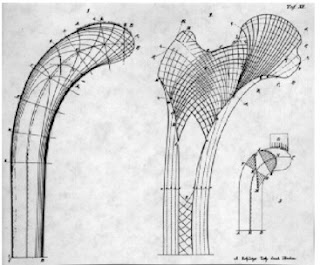Biomimetic Materials
Biomimetics is the use of designs and traits from nature to solve real and potential problems in other branches of science, such as engineering and medicine. In practice, a scientist might study one specific unique quality of an animal, like a spiders ability to build super-strong webs or how a gecko can grip onto a sheer wall. This step alone takes years of intense work, as the scientist must figure out the fundamental building blocks of how an adaptation is produced. Once a scientist determines how an animal produces an adaptation, they can begin to duplicate the result for the good of humanity. In the two examples above possible biometic outcomes could be cables that are thinner yet stronger than others, or non-slip tires that literally can grip onto the road.
Velcro is the most well known and widely used biomimetic material of the present day. It perfectly mimics the gripping actions found in abundance with our natural world.
The French structural designer, Gustave Eiffel, was given the task of designing a structure for the World Trade Fair in 1889 that was to be held in Paris. His ideas that lead him to this marvellous structure, the Eiffel tower, came from biomimetics.
Hermann Von Meyer, who was an anatomist, in the 1850’s, had been conducting research on the femur (thigh bone). The femur was of interest to Hermann due to its horizontal extension into the hip socket so the load carried by the joint is off centre. It was found that the load could be supported due to a tiny lattice arrangement of bones on the head of the femur called trabeculae.
Using nylon fabric and wooden dowels as form-work, the weight of the liquid plaster slurry causes the fabric to sag, expand, and wrinkle.
The Honeycomb Morphologies Project is based on the desire to form an integrated and generative design strategy using a biomimetic approach to architectural design and fabrication
























































